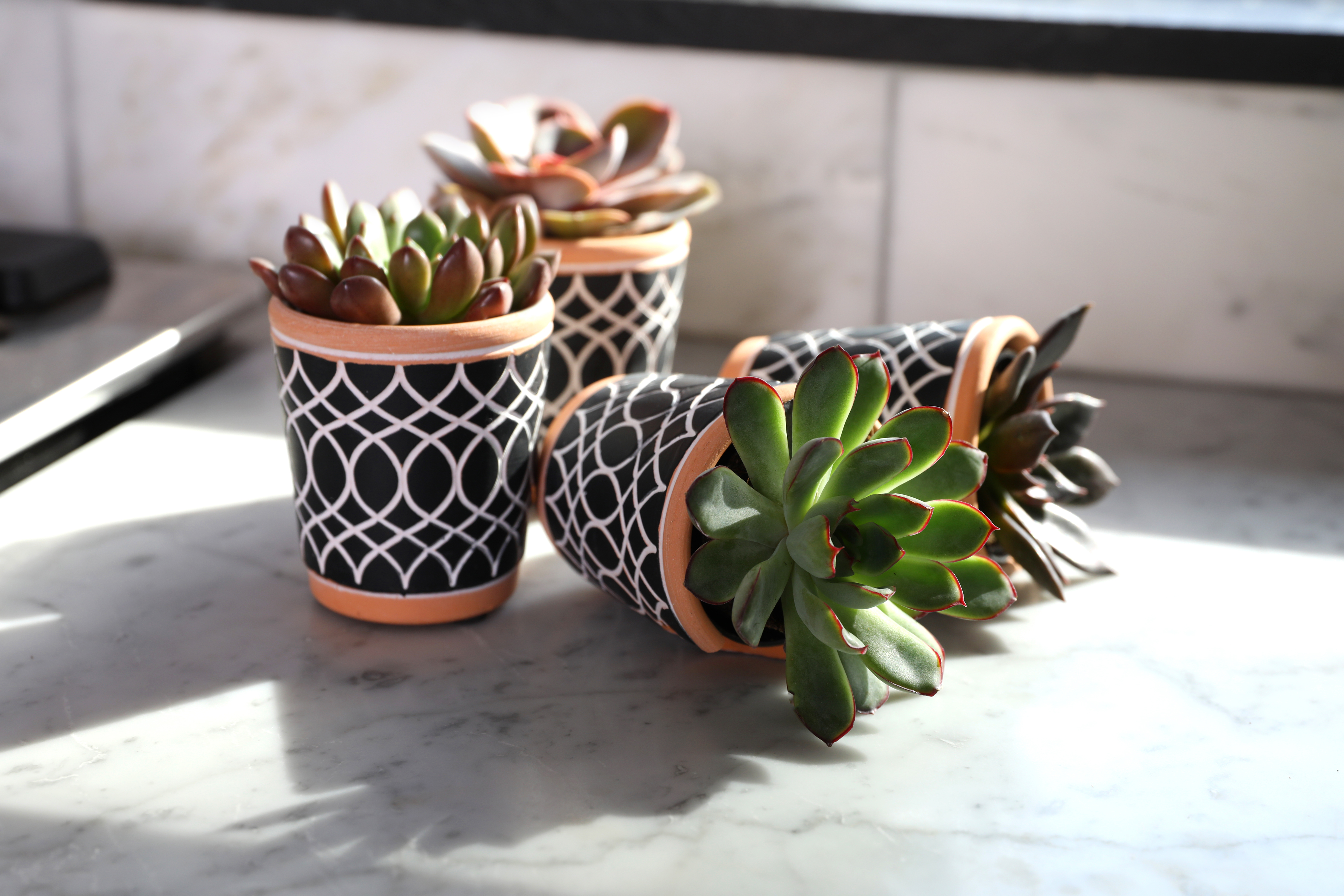What Is A Hardiness Zone & What Does That Mean For Your Plants?
As the temperatures warm up outside, you may be wondering if any of your indoor plants can thrive outside, or which outdoor plants will do best in your yard. There are many ways to find this, but one of the best ways is to figure out what your Hardiness Zone is.
So, how do you figure out what Hardiness Zone you fall into?
First, click HERE to enter your zip code and figure out your Hardiness Zone.
Done? Now let’s dive into what those numbers mean.
With a quick look, you can see a wide variety of colors spanning across the U.S., but what does that mean for your plants?
A hardiness zone indicates the range of possible extreme temperatures in each geographical area. For example, "Zone 1 -50°F" does not mean that -50°F is the temperature all year, but rather, that this is the expected extreme there.
Continuing, other zones break down temperatures into 10 degree segments that are the average ranges of the expected extremes. These averages are what define the zones.
While temperature isn’t the only factor in how well or if a plant will survive where you live, it’s a very good indicator. The USDA Hardiness Zones are broken into 11 different zones throughout the U.S., with each zone varying in 10 degrees.
Here are some of the plants that can handle your zone. That doesn’t mean your zone is the best for that plant to thrive, but the plant can handle it if the temps drop to those extremes!
Zone 1: Below -50°F
Most of us in the U.S. don’t fall into this category, it’s just a few areas of Alaska, but there are a few plants that can handle these frigid temperatures but should be planted during the warmest months.
- Dwarf birch (Betula glandulosa)
- Crowberry (Empetrum nigrum)
- Lapland rhododendron (Rhododendron lapponicum)
Zone 2: -50 to -40°F
This zone is also mostly Alaska, but there are a few places in northern Minnesota that fall into Zone 2 as well.
- Silverberry (Elaeagnus commutata)
- Bush cinquefoil (Potentilla fruticosa)
- American cranberry bush (Viburnum trilobum)
Zone 3: -40 to -30°F
Many of the plants found in the U.S. can withstand colder temperatures starting in Zone 3, as this covers much of the northern Midwest states like Montana, North Dakota, Wisconsin and Maine.
- Smooth hydrangea (Hydrangea arborescens)
- Common juniper (Junipercus communis)
- Siberian crabapple (Malus baccata)
Zone 4: -30 to -20°F
Zone 4 is where more plants can thrive and includes Wyoming, South Dakota, Wisconsin and parts of New York and New Hampshire.
- Sugar maple (Acer saccharum)
- Panicle hydrangea (Hydrangea paniculata)
- Chinese juniper (Juniperus chinensis)
Zone 5: -20 to -10°F
Zone 5 is very common in the Midwest and Northeast and has higher humidity in summer. This zone includes states like Colorado, Nebraska, Illinois, Indiana and Michigan.
- Flowering dogwood (Cornus florida)
- Boston ivy (Parthenocissus tricuspidata)
- Sycamore tree (Platanus occidentalis)
Zone 6: -10 to 0°F
This zone is in the very middle of the road, mostly in the Pacific Northwest and throughout the middle of the country, including states like Washington and Oregon, as well as Kansas, Missouri and Ohio.
- Japanese maple (Acer palmatum)
- American holly (Ilex opaca)
- Weeping willow (Salix babylonica)
Zone 7: 0 to 10°F
In Zone 7, you will only see winter temperatures on occasion, meaning most plants will fare well. This zone weaves through upper Texas, Oklahoma and even North Carolina.
- Bigleaf maple (Acer macrophyllum)
- Atlas cedar (Cedrus atlantica)
- Magnolia tree (Magnolia selections)
Zone 8: 10 to 20°F
Zone 8 is where things warm up, giving plants a much longer growing season. This zone covers Texas, Mississippi, Alabama and Georgia.
- Strawberry tree (Arbutus unedo)
- Mexican orange (Choisya temata)
- Hibiscus (Hibiscus selections)
Zone 9: 20 to 30°F
Zone 9 is very warm. Although temperatures can drop below freezing, it is rare. A lot of this zone is within California, but also Louisiana and Florida.
- Asparagus fern (Asparagus setaceous)
- Dahlia (Dahlia selections)
- California pepper tree (Schinus molle)
Zone 10: 30 to 40°F
Zone 10 is one of the warmest, mostly covering southern California and Florida. It is extremely rare for temperatures to ever fall below zero.
- Lemon eucalyptus (Eucalyptus citriodora)
- Rubber plant (Ficus elastica)
- Royal palm (Roystonea regia)
Zone 11: 40 to 50°F
Zone 11 is the warmest in the U.S., covering Hawaii. Since this zone is warm all year, tropical plants always do well.
- Lime (Citrus aurantiifolia)
- Sago palm (Cycas revoluta)
- Grevillea (Grevillea)
Now that you know your Hardiness Zone, you can decide which plants you’d like to grow and how well they can handle it. Remember, temperature isn’t the only factor in their success! Keep in mind that you should only plant what can withstand the coldest temperatures your area can hit.








